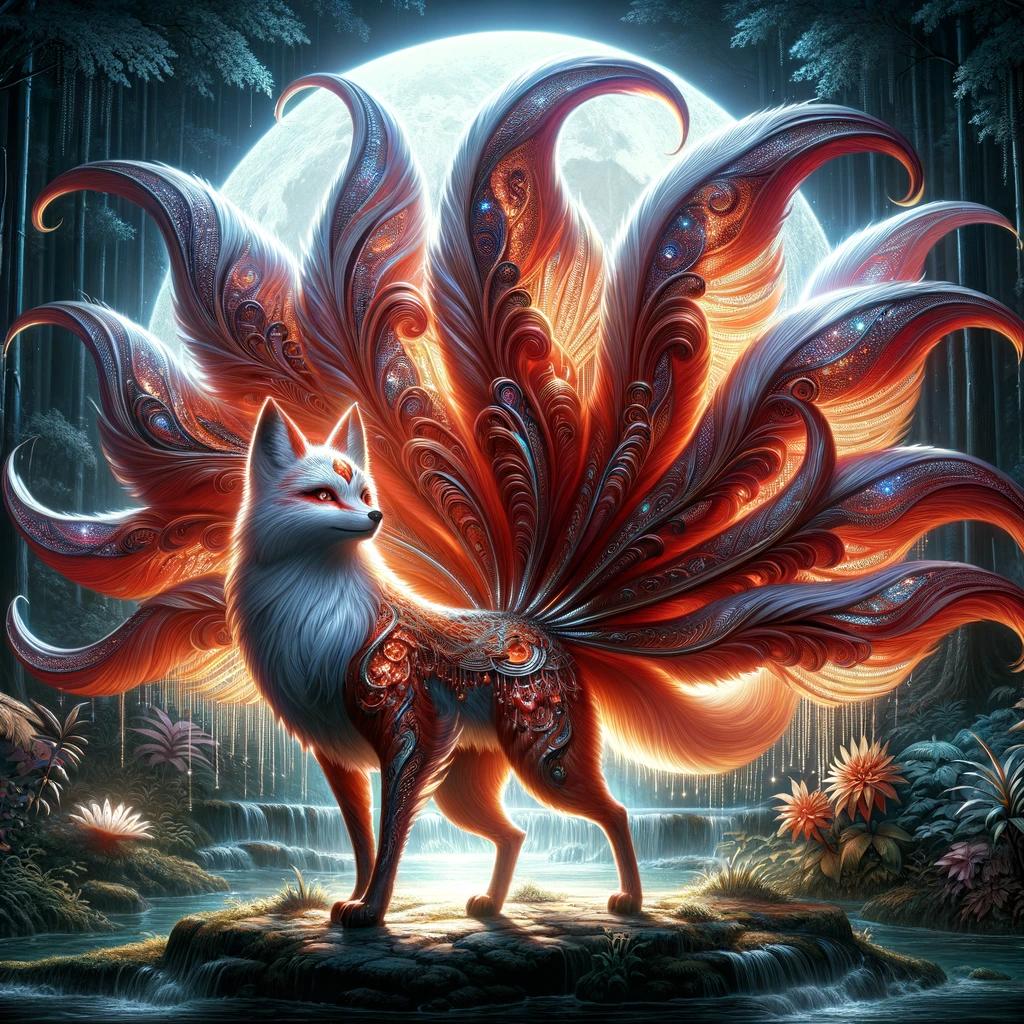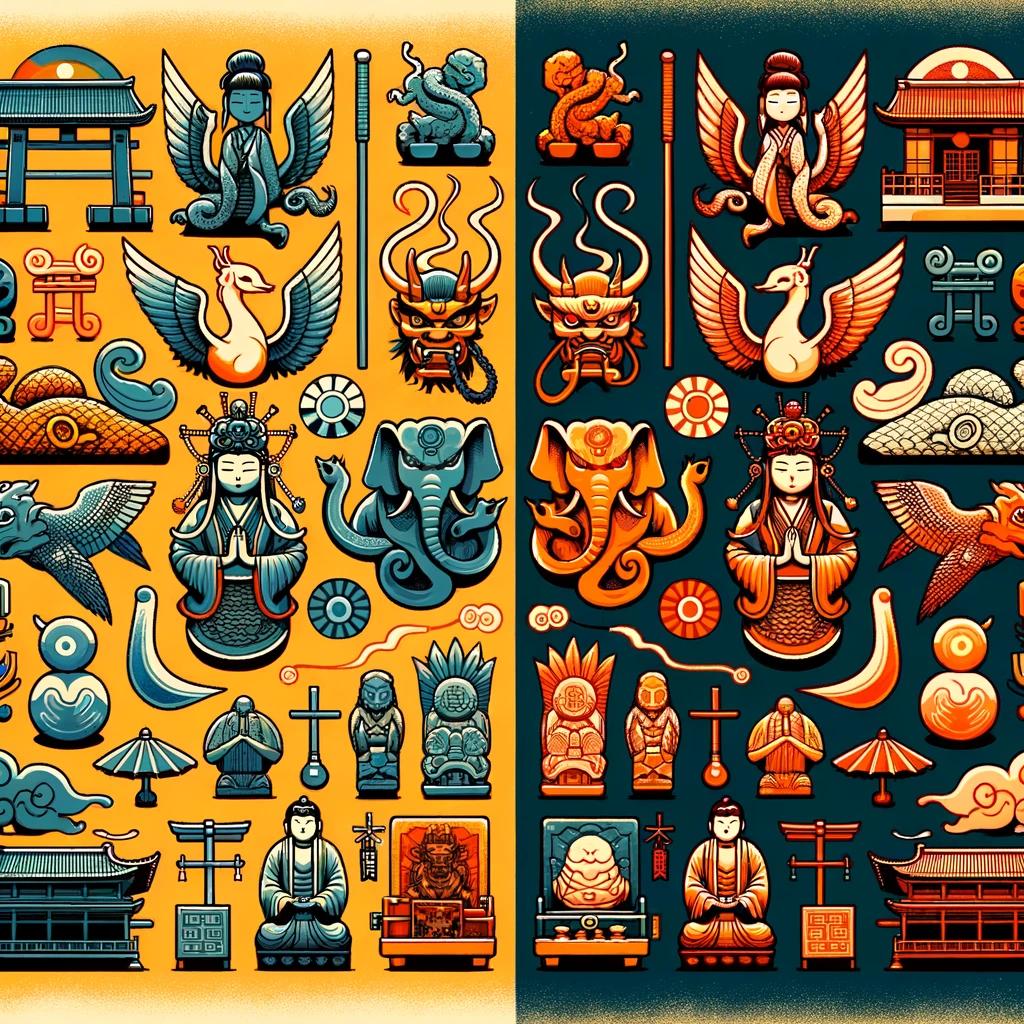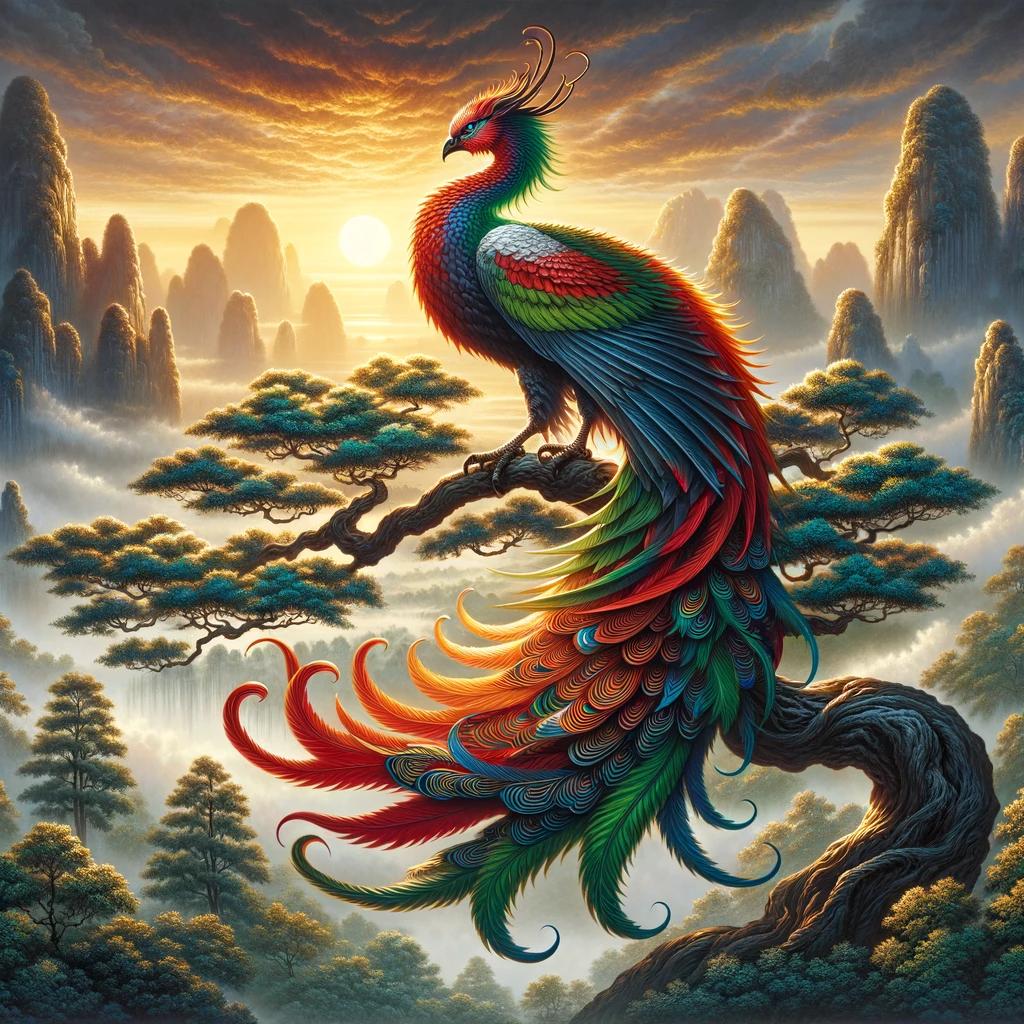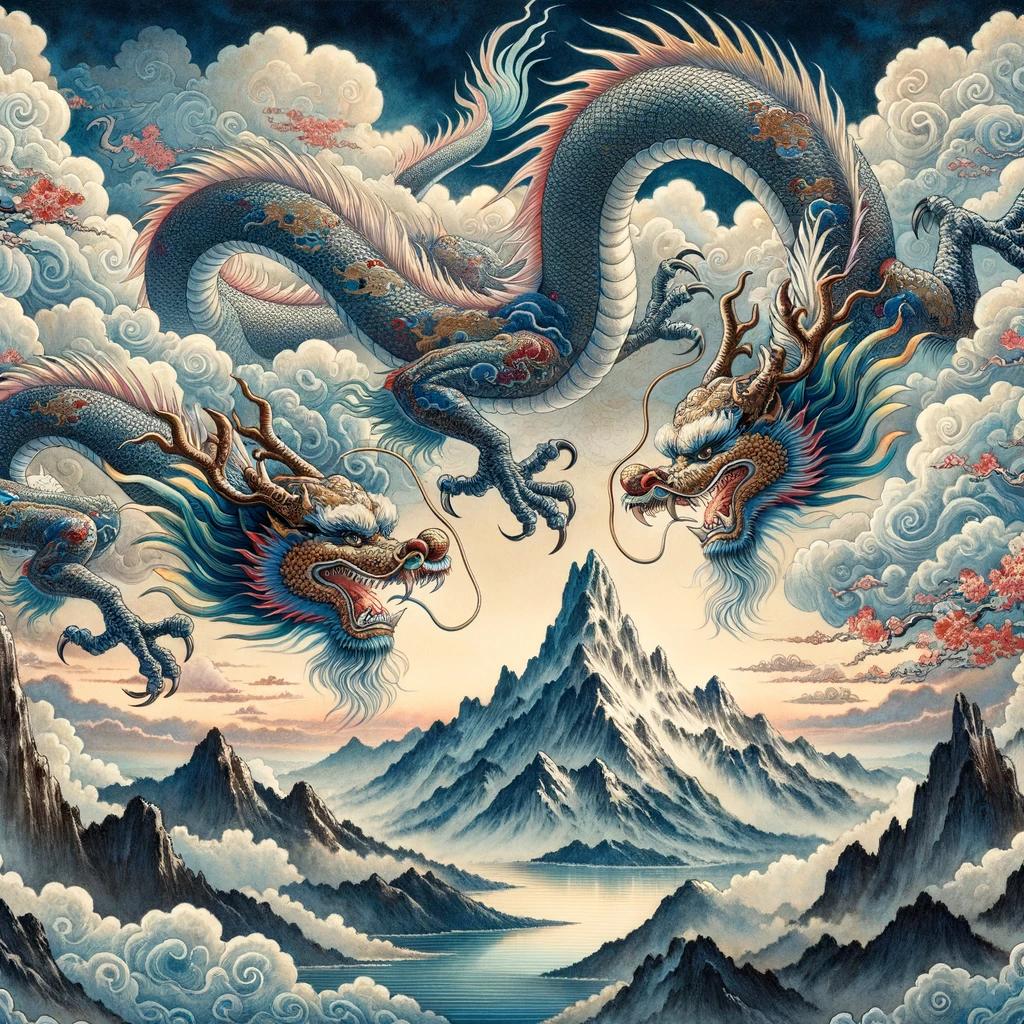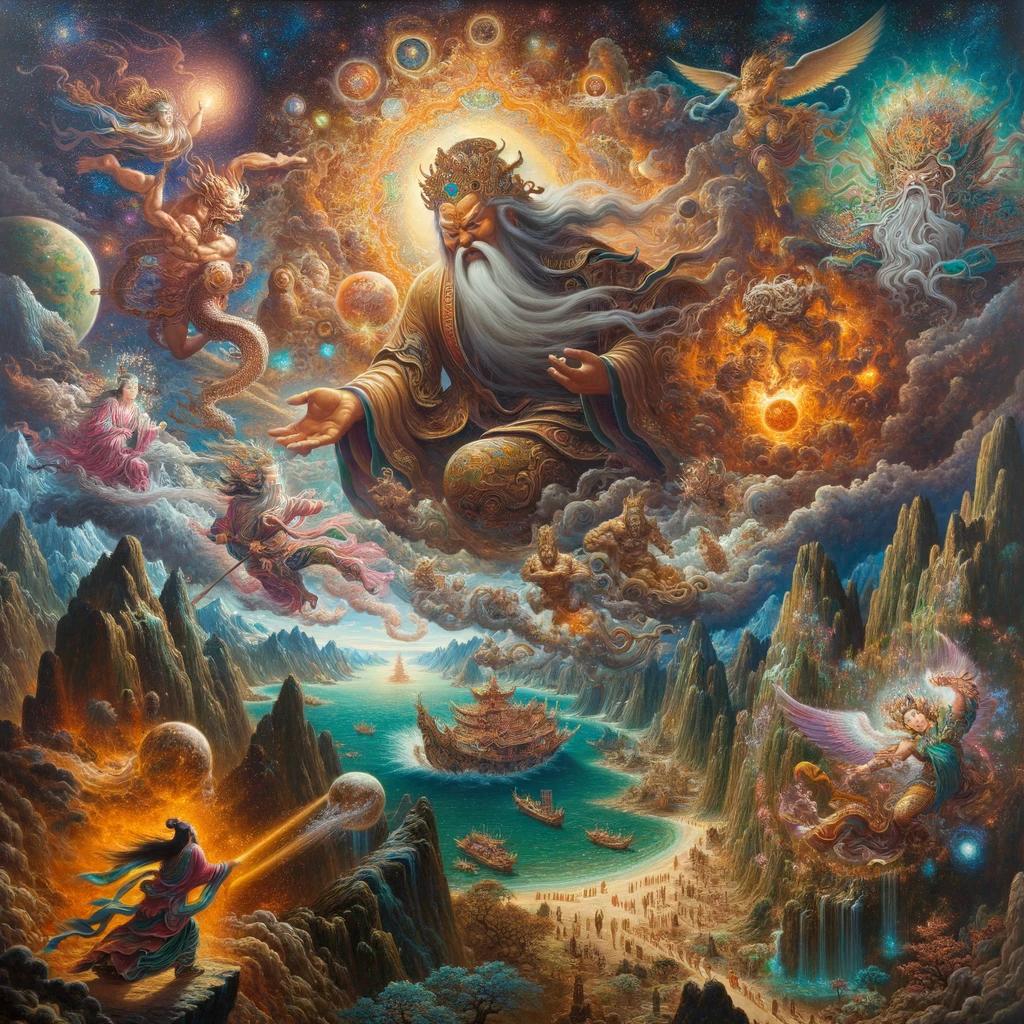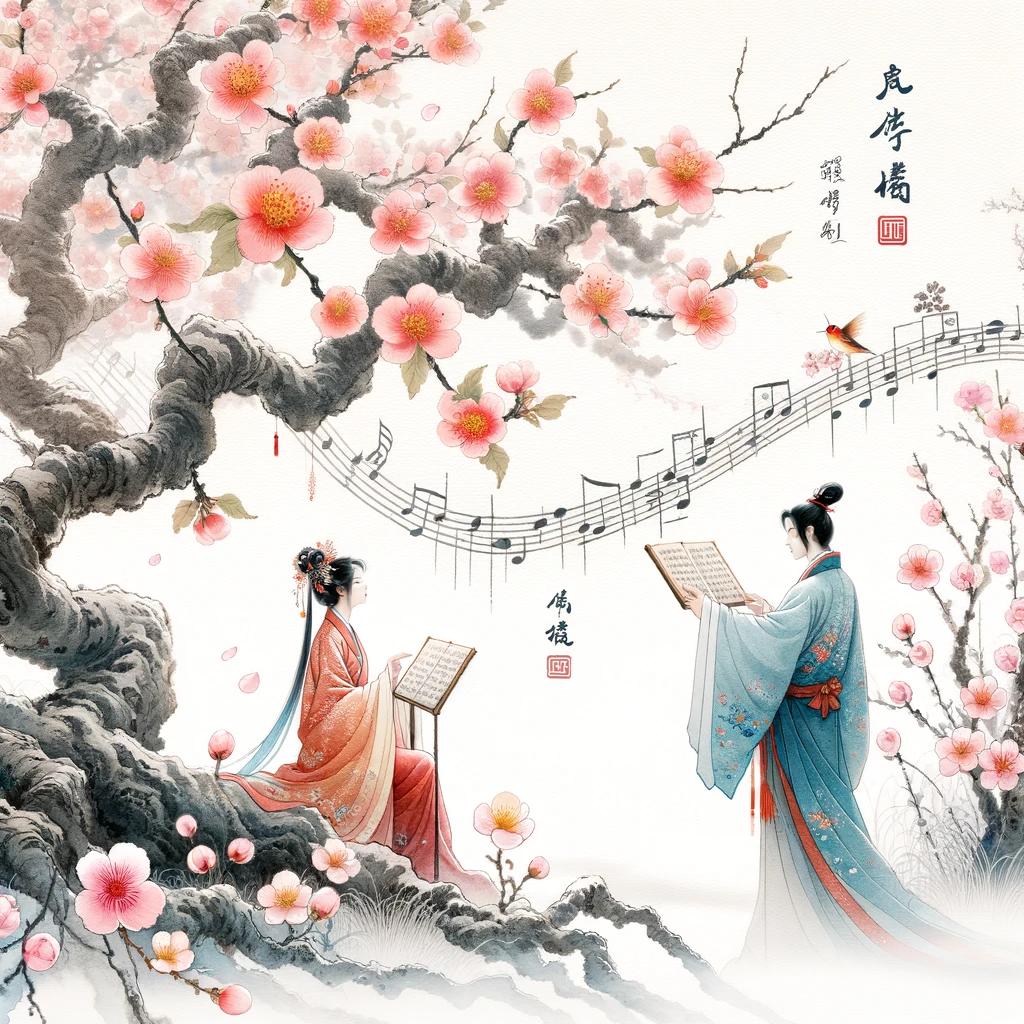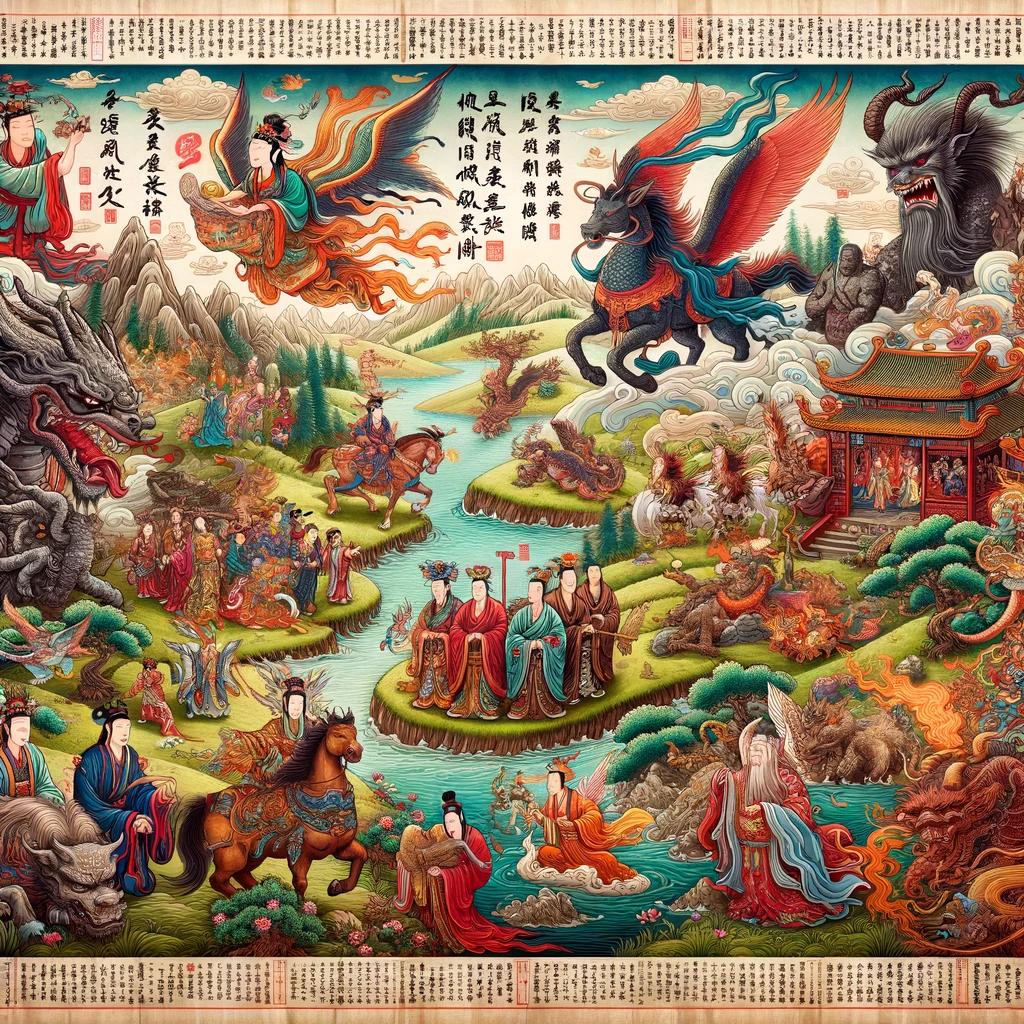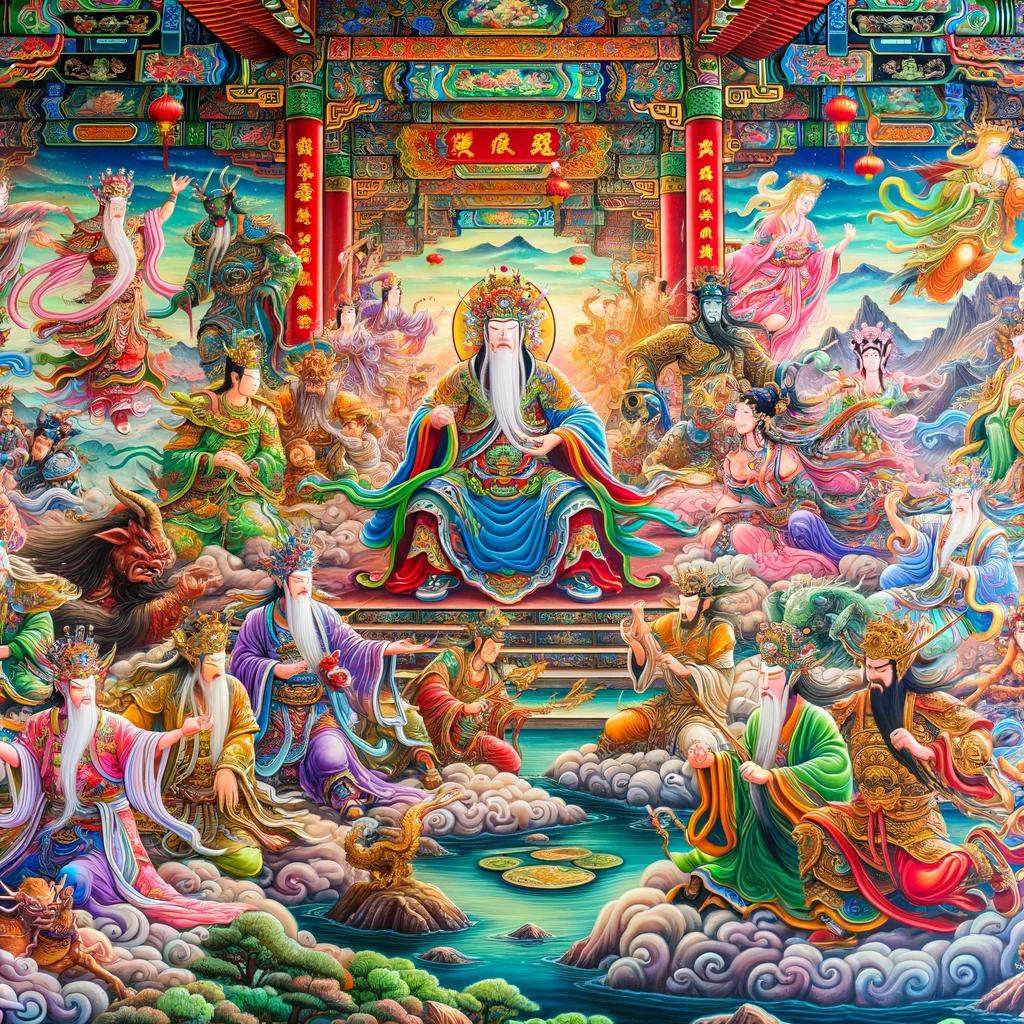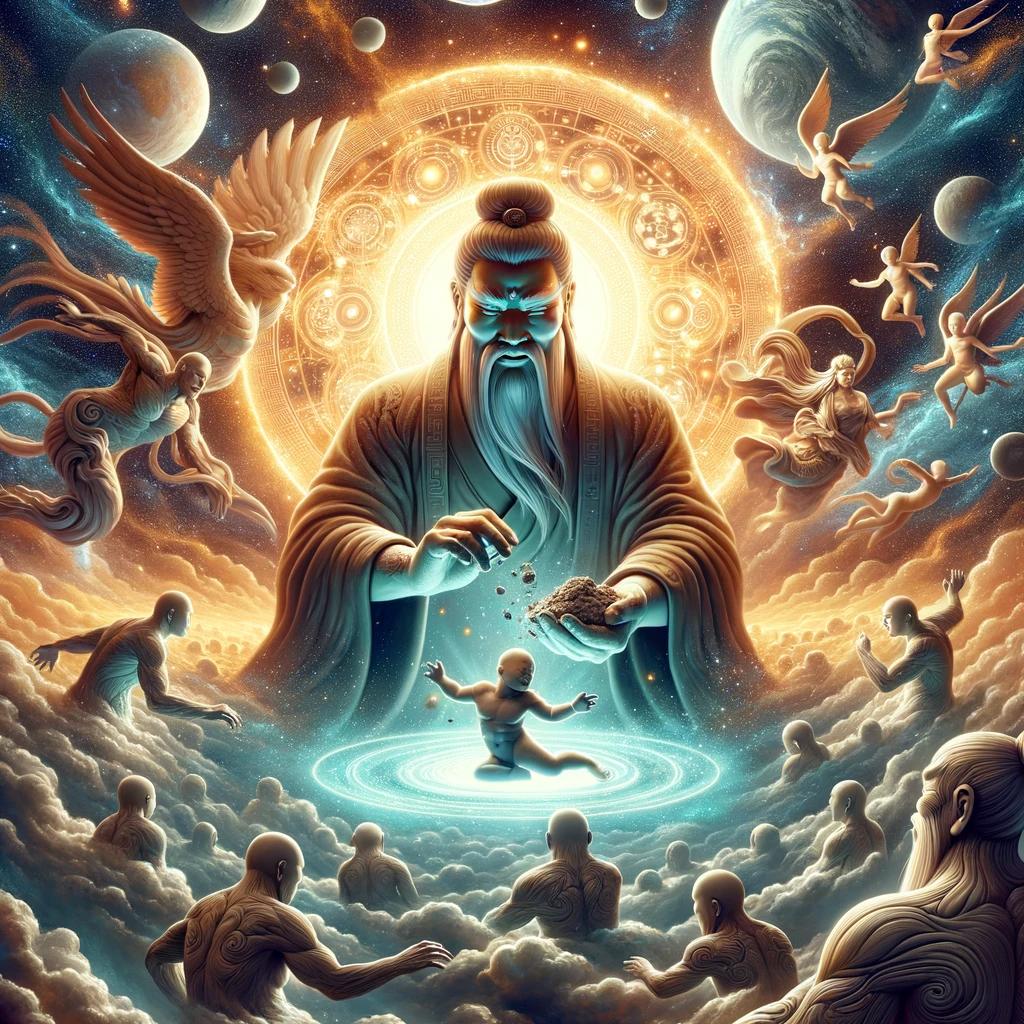The Amazing World of Chinese Huli Jing: Unveiling the Mysteries of Fox Spirit Lore
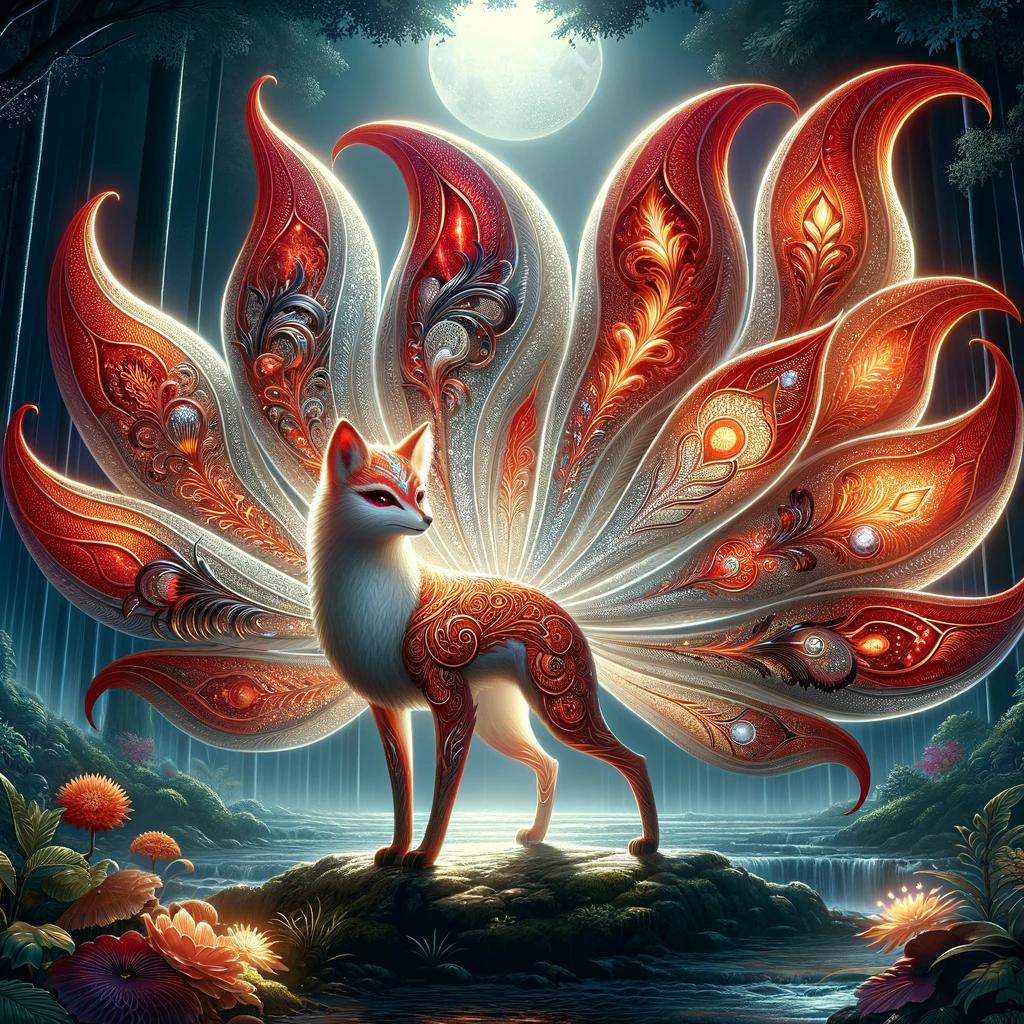
Chinese Huli Jing, also known as fox spirits, are fascinating mythological creatures in Chinese culture. They possess the ability to shape-shift and can either be benevolent or malevolent. These extraordinary beings are referred to by various terms such as Huli Jing, Nine Tailed Fox, Fox Spirit, Fox God, and Fox Demon.
With distinctive powers and characteristics, they hold a significant place in Chinese mythology, literature, and legends. From their renowned representation as nine-tailed foxes to their dual nature as both auspicious and ominous omens, Chinese Huli Jing continue to captivate and intrigue.
Understanding Chinese Huli Jing
In order to truly appreciate the enchanting world of Chinese Huli Jing, it is crucial to delve into their captivating mythology. These mythical creatures hold a significant place in Chinese folklore and are revered for their unique abilities and mysterious nature.
The Mythology of Chinese Huli Jing
The mythology surrounding Chinese Huli Jing is rich and intriguing. These fox spirits are known for their shape-shifting abilities and are often depicted as mesmerizing beings capable of assuming various forms.
According to ancient tales, they possess the power to transform into beautiful women or adult men, even having romantic relationships with humans.
Legends also describe the Huli Jing’s extraordinary sensory perception, granting them knowledge of events occurring over a thousand miles away.
Furthermore, they are believed to possess the ability to poison their victims, showcasing their potent and sometimes dangerous nature.
Origins and Cultural Significance
The origins of Chinese Huli Jing can be traced back to ancient Chinese mythology, where their existence became deeply ingrained in cultural beliefs. These fox spirits are considered to be celestial beings with both spiritual and physical attributes, often associated with divine qualities and supernatural powers.
Within Chinese culture, Huli Jing symbolize different aspects depending on the context. They are associated with wisdom, trickery, and even as protectors of households. Their shape-shifting abilities and elusive nature have contributed to their cultural significance, making them a subject of fascination and reverence.
Comparisons with Japanese Fox Spirits
While Chinese Huli Jing may share similarities with Japanese fox spirits, known as Kitsune, they possess unique characteristics that set them apart. In Chinese mythology, Huli Jing are often portrayed with nine tails, signifying their supernatural powers and divine essence, while Kitsune in Japanese folklore are typically depicted with one to five tails.
The portrayal of these mythical creatures also differs in terms of their behavior and intentions. While both Huli Jing and Kitsune can be benevolent or malevolent, Chinese Huli Jing are frequently depicted as more mischievous and unpredictable, capable of using their powers for both good and evil purposes.
Understanding the distinct traits and cultural significance of Chinese Huli Jing provides a deeper appreciation for their enchanting presence in Chinese mythology and the fascinating world they inhabit.
The Mystical Powers of Huli Jing
Chinese Huli Jing possess an array of fascinating abilities and hold a rich lore surrounding them.
Let’s dive into their mystical powers and explore their significance in various cultural contexts.
Shape-Shifting Abilities and Fox Spirit Lore
Huli Jing are renowned for their remarkable shape-shifting abilities. They can seamlessly transform into different forms, including humans, animals, and inanimate objects. In Chinese folklore, these shape-shifting capabilities symbolize their ethereal nature and their ability to traverse between realms.
The legends surrounding Huli Jing’s shape-shifting abilities often revolve around their desire to interact with humans or the mischief they create by assuming deceptive forms. These stories highlight their duality as both enchanting and potentially manipulative beings.
Nine-Tailed Foxes in Korean Folklore
The concept of nine-tailed foxes extends beyond Chinese mythology and also holds significance in Korean folklore. In Korean tales, these mystical creatures, known as “gumiho,” are considered powerful shape-shifters as well.
They are often depicted as beautiful women who can shape-shift into foxes with nine tails, possessing supernatural abilities.
Korean myths portray gumiho as formidable beings with intense magical powers, capable of great benevolence or malevolence depending on their intentions.
Their nine tails symbolize profound wisdom, age, and immense spiritual energy.
Exploring Nine-Tailed Fox Myths
Within Chinese mythology, the concept of nine-tailed foxes has become intertwined with the Huli Jing. These mesmerizing creatures are often associated with tales of love, cunning strategies, and calamity.
Throughout Chinese literature and legends, nine-tailed foxes are depicted as intelligent beings who possess vast knowledge and foresight.
They are believed to have the ability to see events unfolding in distant places and to manipulate human emotions through enchantments or illusions.
These enchanting stories surrounding nine-tailed foxes showcase the significance of these mythical creatures and their lasting impact on traditional Chinese culture.
Legends and Tales of Huli Jing
The fascinating world of Chinese Huli Jing is adorned with captivating legends and enchanting tales that have been passed down through generations. These stories showcase the mystical nature and intricate symbolism associated with these mythical creatures.
Let’s explore some of the famous stories and characters, as well as their significant role in Chinese mythology and their influence on art, literature, and popular culture.
Famous Stories and Characters
Within the realm of Chinese Huli Jing mythology, certain stories and characters have stood the test of time.
One such tale is “The Legend of Nine-Tailed Fox,” which narrates the adventures of a nine-tailed fox spirit and its interactions with humans. Another renowned character is Daji, a fox spirit infamous for her beauty and cunningness, featured in the novel “Fengshen Yanyi.”
These stories and characters not only entertain but also hold cultural and moral significance.
The Role of Huli Jing in Chinese Mythology
Huli Jing play a prominent role in Chinese mythology, intertwining with various deities, heroes, and supernatural beings. These mythical fox spirits are often depicted as advisors, seducers, or protectors, depending on the context of the story.
They symbolize transformation, desire, and the delicate balance between good and evil. Exploring their role in Chinese mythology provides valuable insights into the cultural beliefs and values of ancient China.
Huli Jing in Art, Literature, and Popular Culture
The allure of Huli Jing has extended beyond mythology and has found its place in diverse forms of artistic expression. From traditional Chinese paintings and sculptures to contemporary literature and films, the presence of these mystical fox spirits pervades Chinese art and culture.
Numerous renowned works, such as Pu Songling’s “Strange Tales from a Chinese Studio,” have immortalized the enchantment and intrigue surrounding Huli Jing. Their enduring popularity showcases the ongoing fascination with these otherworldly beings.
The Dual Nature of Huli Jing
The Huli Jing, also known as Chinese fox spirits, possess a fascinating duality in their nature, being both benevolent and malevolent entities. This dichotomy is reflected in their various representations and roles in Chinese mythology and folklore.
Benign and Beneficent Fox Spirits
Some Huli Jing are regarded as benign and beneficent spirits, known for their wisdom and protective nature. They are often depicted as guides, offering assistance and advice to humans. Legends tell tales of Huli Jing who aid individuals in need, bestowing blessings and good fortune upon them.
These benevolent fox spirits are revered for their positive influence and their ability to bring harmony and prosperity.
Malevolent Foxes and Fox Demons
On the other hand, there are malevolent Huli Jing who use their supernatural powers for malicious purposes. These foxes are often depicted as tricksters, causing chaos and playing pranks on humans.
Some stories portray them as seductive and manipulative beings who lure unsuspecting victims into their traps. Such malevolent foxes are feared for their ability to bring misfortune, illness, and even death.
The Symbolism and Duality of Huli Jing
The duality of Huli Jing reflects the contrast between light and darkness, good and evil, within Chinese mythology. These fox spirits symbolize the complex nature of human existence, reminding us of the constant interplay between positive and negative forces in the world.
The symbolism of Huli Jing encourages individuals to contemplate the consequences of their actions and the choices they make, as they navigate the delicate balance between virtue and vice.
Huli Jing in Chinese Culture
Huli Jing, the mystical fox spirits, hold a significant place in Chinese culture, leaving an indelible mark throughout history.
From ancient Chinese dynasties to modern-day beliefs and celebrations, the influence of these enigmatic creatures is deeply ingrained in the fabric of Chinese folklore and traditions.
Huli Jing in Ancient Chinese Dynasties
Dating back to ancient Chinese dynasties, Huli Jing were revered and feared for their supernatural powers.
They were often depicted in art, literature, and imperial court rituals, symbolizing both protection and potential danger. Emperors and rulers sought their guidance, believing that Huli Jing possessed profound wisdom and foresight.
The Influence of Huli Jing on Chinese Folklore
Huli Jing left an enduring impact on Chinese folklore, weaving their way into countless myths, legends, and oral traditions. Stories of their shape-shifting abilities, encounters with humans, and their fierce loyalty or trickery captivated the imaginations of generations.
These tales served as cautionary or moralistic narratives, highlighting the duality and unpredictability of Huli Jing.
Modern Perceptions and Celebrations of Huli Jing
Despite the passage of time, Huli Jing continue to hold a prominent place in modern Chinese culture. Their mystical aura and dual nature resonate with people, invoking both fascination and trepidation.
Huli Jing often feature in contemporary literature, movies, and television, showcasing their enduring appeal. Additionally, annual festivals and rituals dedicated to Huli Jing, such as the “Fox Wedding” festival, keep the tradition alive and bring communities together to honor these captivating beings.
Exploring the Legacy of Huli Jing
As we delve into the rich history of Chinese Huli Jing, it becomes apparent that their legacy extends far beyond ancient mythology. In contemporary China, Huli Jing continue to hold a significant place in cultural traditions and practices.
Huli Jing in Contemporary China
Huli Jing continue to be revered and celebrated in modern-day China. Various festivals and events pay homage to these mythical creatures, such as the Huli Jing Festival, where people dress up as fox spirits and engage in joyful festivities.
The Impact of Huli Jing in Modern Literature and Media
The allure of Huli Jing has not escaped the realm of modern literature and media in China. Numerous novels, comics, and films draw inspiration from these captivating creatures, enchanting audiences with stories of their shape-shifting abilities and duality.
Huli Jing in Future Perspectives and Cultural Evolution
As China continues to evolve, so does the perception of Huli Jing. While their presence remains rooted in ancient folklore, the way they are portrayed and interpreted in contemporary culture is an ever-changing phenomenon.
Artists, writers, and scholars constantly explore new perspectives, ensuring that the legacy of Huli Jing remains vibrant in future generations.
.











